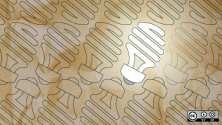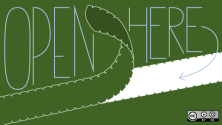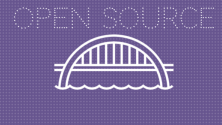Open Source Bridge is an annual conference focused on building open source community and citizenship through four days of technical talks, hacking sessions, and collaboration opportunities. Prior to the event, I caught up with one of the speakers, Rabimba Karanjai, who will give a talk titled Turning sensors into signals: Humanizing IoT with old smartphones and the Web.

Rabimba has been involved in open source since the summer of 2014, when he was connected to Mozilla for the first time through the company's investments into Firefox OS in India. In this interview, I ask him how he got involved in open source, what he's currently working on, and how get got involved in contributing to Mozilla.

How did you get involved in open source?
This is actually a funny story. It's two-fold, though. Back in the summer of 2014, when Mozilla was still pretty heavily invested in Firefox OS, the first cheap Firefox OS device was launched in India. It was called the Intex CloudFX. Everyone was super excited about it, and a lot of programs were done around it. One of the those programs was an "App of the month" contest by Firefox Clubs, where the prize for that month was a black Firefox hoodie if you could make the best education-themed app. I ended up making Math Racer, which didn't get selected to be app of the month. But I did get selected for a fellowship and got to fly to Washington, D.C. to showcase it to senators. Janet Swisher from Mozilla Developer Network (MDN) helped by loaning me a Flame for three days for the demo! That was my first interaction with the MDN team. At the same time, I was very unhappy about the performance of CloudFX and frequently ranted about it. Combine that with an unrelated incident on Mozilla L10n 'openness' in Facebook (an afterthought can be seen here) where people asked "what have you done?", and I actually decided to do something about it.
So one fine evening when I was finishing up my intern work at IBM TJ Watson lab, I started chatting with Dietrich in IRC regarding the FxOS keyboard. He supported me whole heartedly and asked me to put up a proposal in dev-gaia, the mailing list for the Firefox OS Devs, which eventually ended up in this. That is how the whole journey started for me. There were a lot of side projects and activities, some more useful than others, but this is what I'll remember as my stepping stone into open source.
Can you tell us about what you're working on right now?
Mostly reading papers and trying to write code. I am still a student at Rice University trying to claw my way towards a doctoral degree in computer science. Part of the reason I get my scholarship and stipend is that I actually produce results based on my research (still struggling on that front) and grade students as part of my TA-ship. That is what I do for a living.
When I'm not doing that, I try to tinker with my side projects (a lot of them have been Mozilla-related lately), watch anime, and read books.
You're a Mozilla contributor. Can you tell us what that experience has been like?
My work with Mozilla up to this point has been a roller coaster ride of emotions. Contributing to Mozilla projects is never just a code-only thing. The glee comes when you get to know your merged code will affect millions of people, including your peers and profs in school who use Firefox, or when you have no clue what is happening. And I always get help when I am stuck. When everything started with WebVR, Josh and the Mozilla WebVR team helped me answer any of my queries. Events like teaching teenagers on how to code in WebVR have been an awesome experience for me. Working with IoT has been inspirational, and another awesome learning experience has been interacting with Mozilla Security team. Sometimes I felt pretty lost, like when we were starting the "Chota Fennec" project and it just felt way too big to be community driven. But it all panned out pretty well, and now the goals are part of the main product. Then there are awesome groups like Mozilla TechSpeakers and Participation Leaders, which I am part of. I always had help from Havi and Dietrich from DevRel team no matter where I was stuck, so I guess the journey has been pretty good so far.
Can you give us a preview of your Open Source Bridge talk?
This talk will mostly deal with use cases and demos of what we can do with all those old mobile phones we have lying around our homes. IoT is a hot topic right now—a space everyone wants to get into. From Nest to Philips, everyone has a product that caters to this niche. But we have no unified way of connecting them. And do we want our data to go into all of them? We have so many sensors now, but they don't feed us data that we can turn into actionable signals.
In the talk, we will show how we can use our old Android and Firefox OS (the demo uses a FxOS Flame) smartphones as sensors and set specific triggers around them. We turn that data from sensors into actionable signals, which we can act upon. And all this with the power of open web and the platform running in JavaScript. So there's no need to get locked down in an ecosystem or into different devices where you have no idea what is going on with the data.
What's your take on Mozilla's recent involvement in IoT?
There are very exciting times ahead. I recently interacted with some awesome people in projects like the Connected Devices teams (Mozilla's version of IoT teams). This is especially important for a market where every other solution is locked down (proprietary). I'm pretty excited to see Mozilla getting into IoT, but still want it to be as strong and as relevant in the browser space because, that's still what powers the web. And we need to be forefront of it to be relevant and to guide others away from locked down solutions.







Comments are closed.